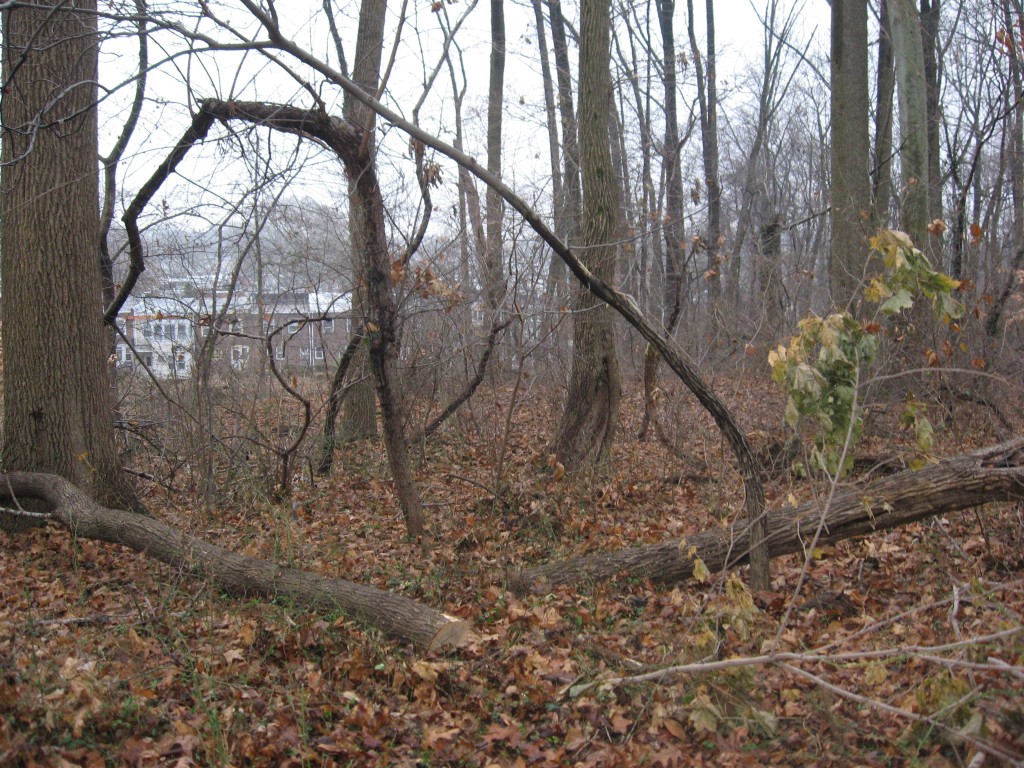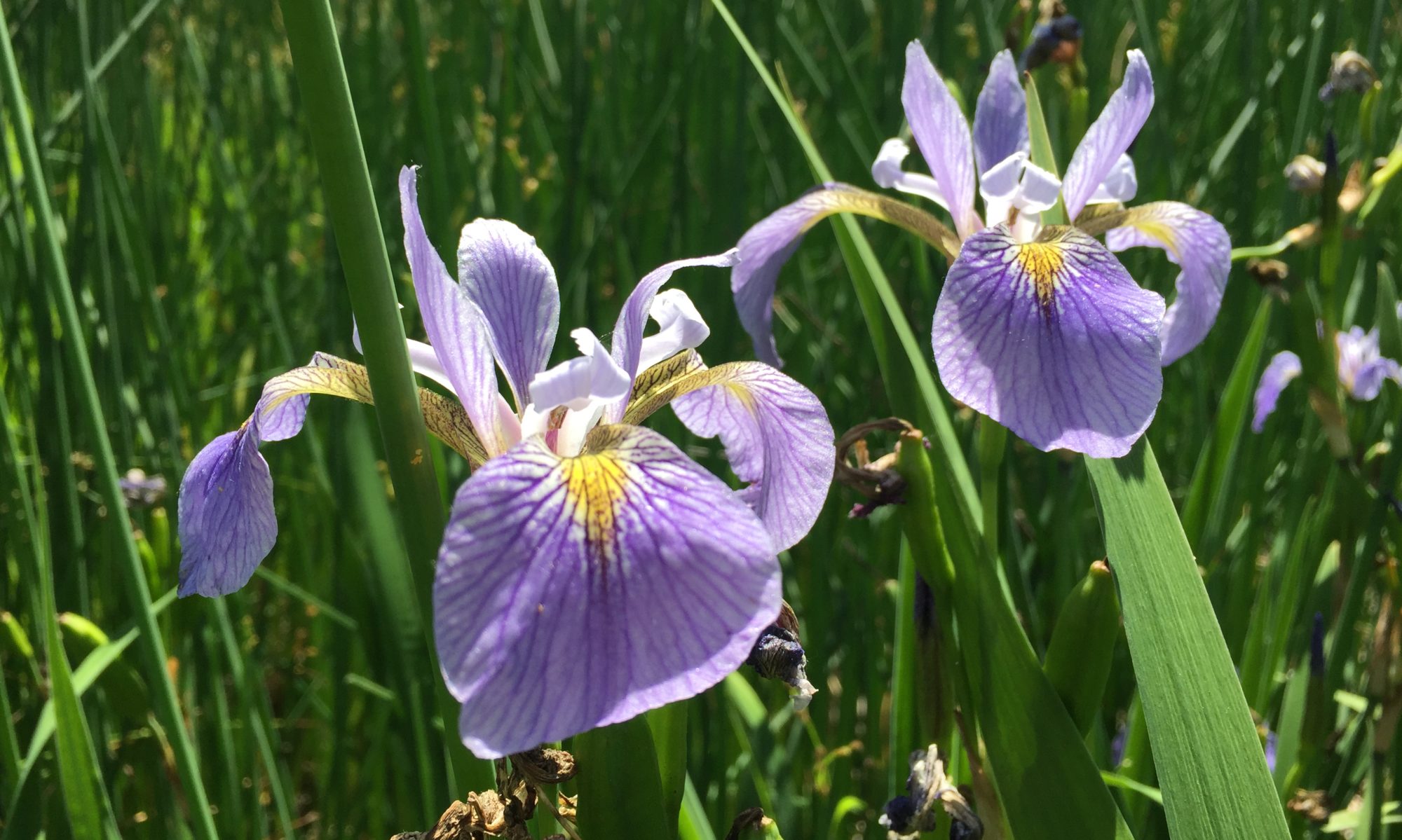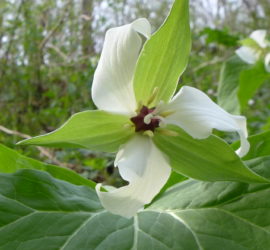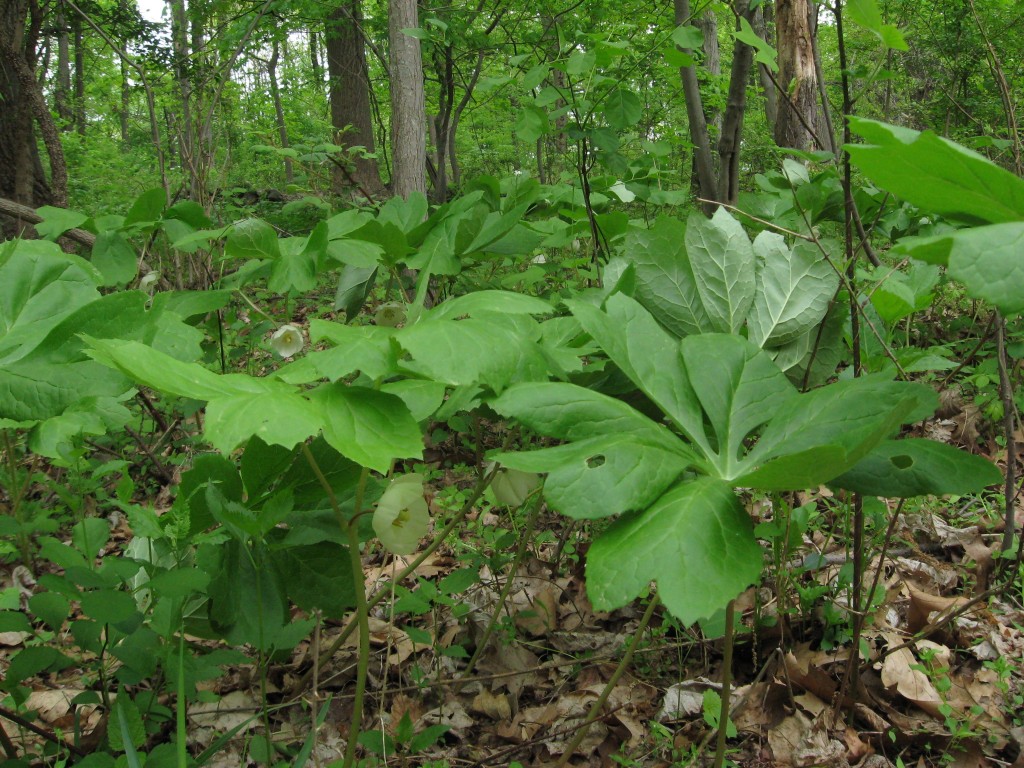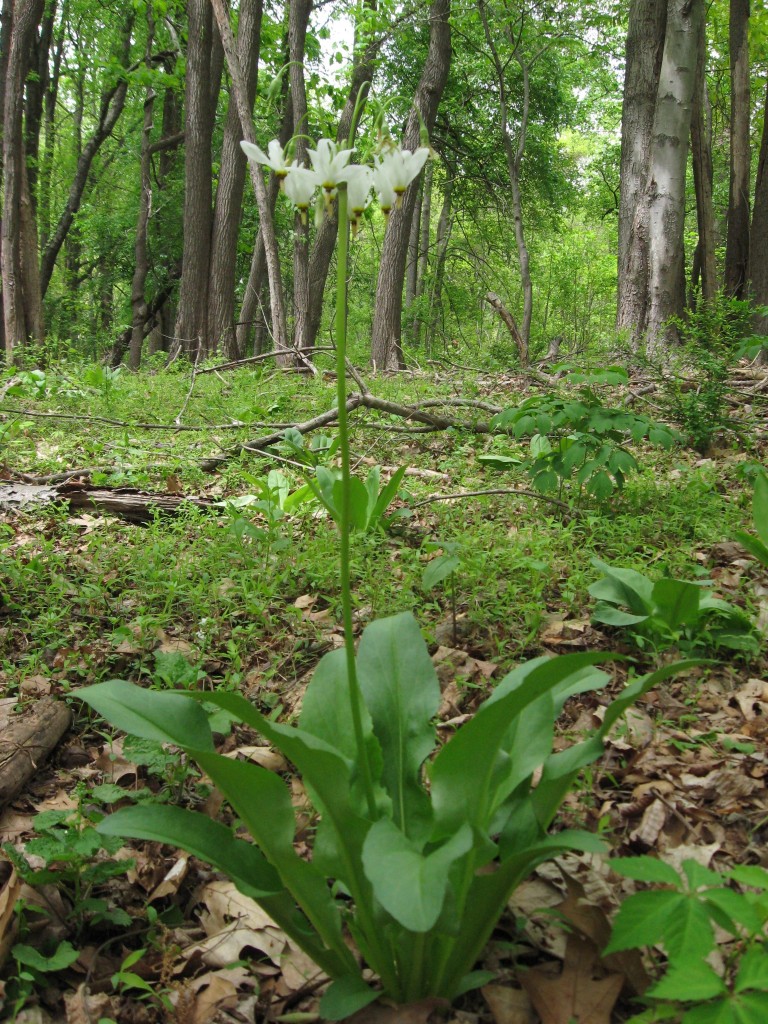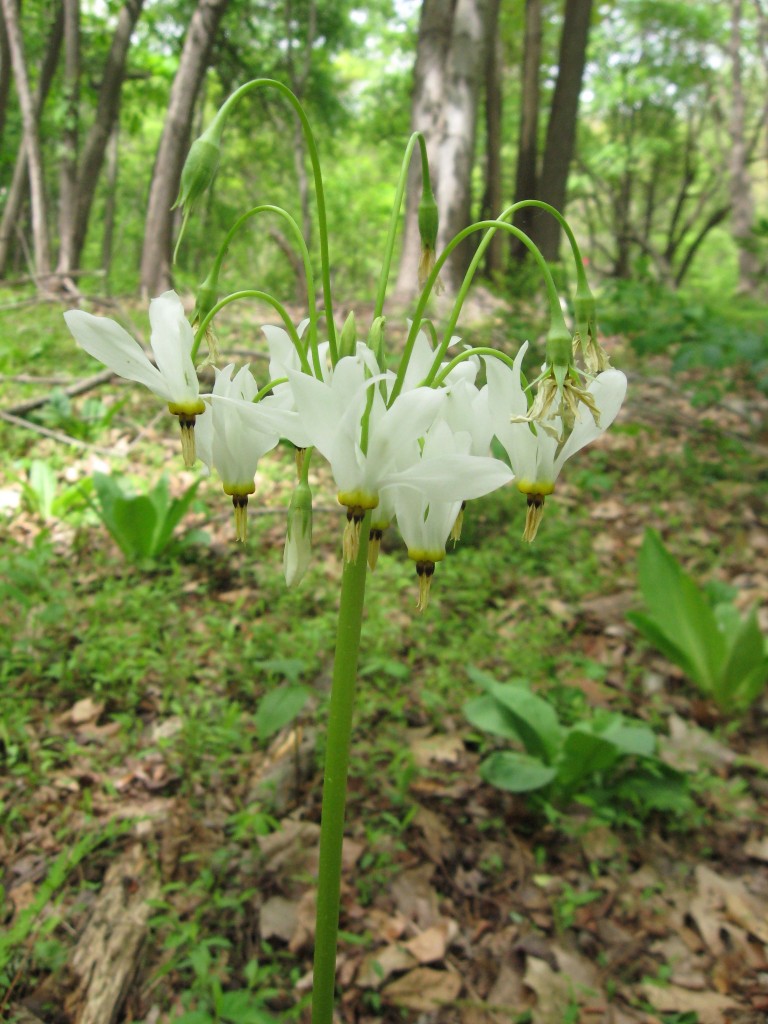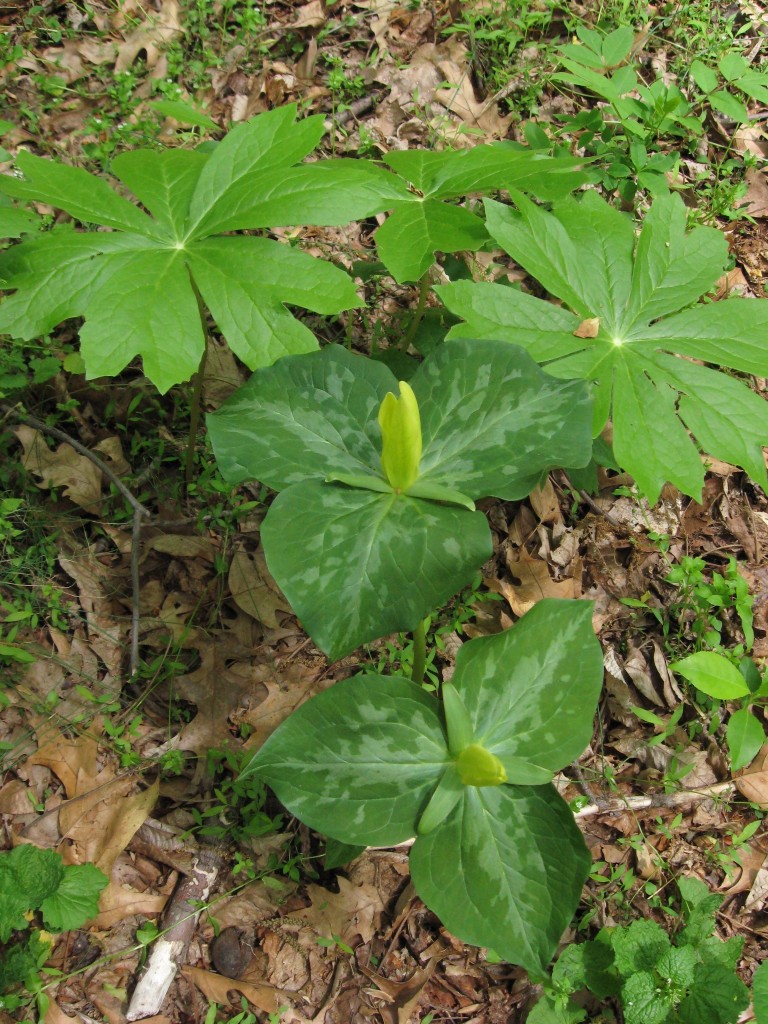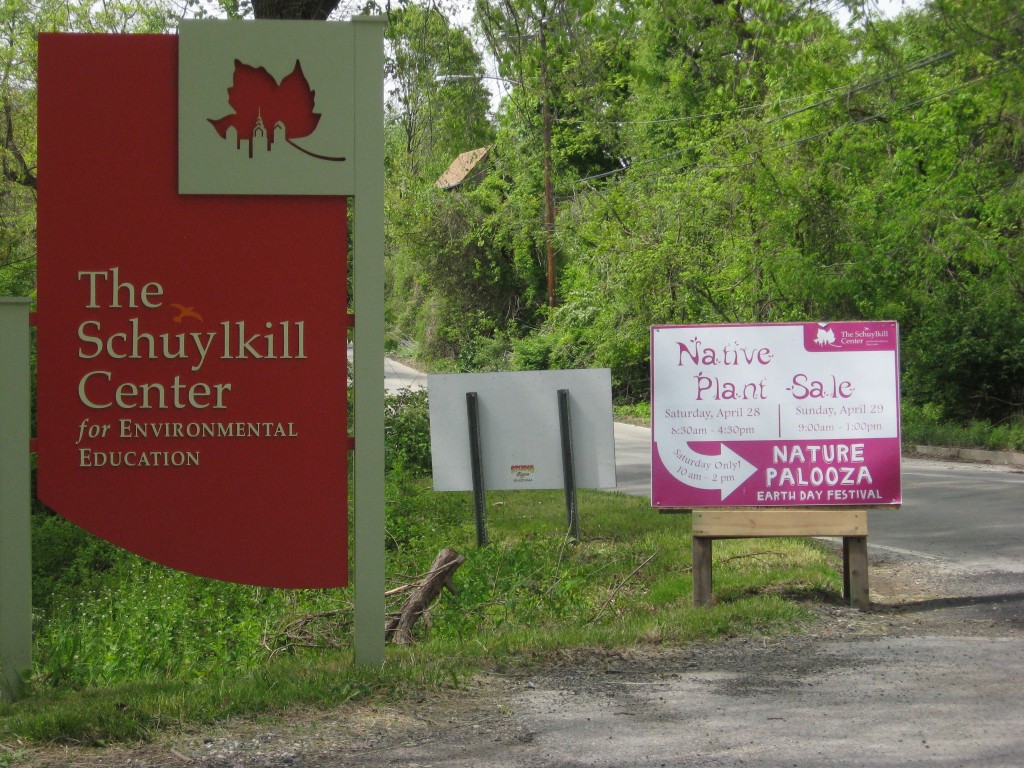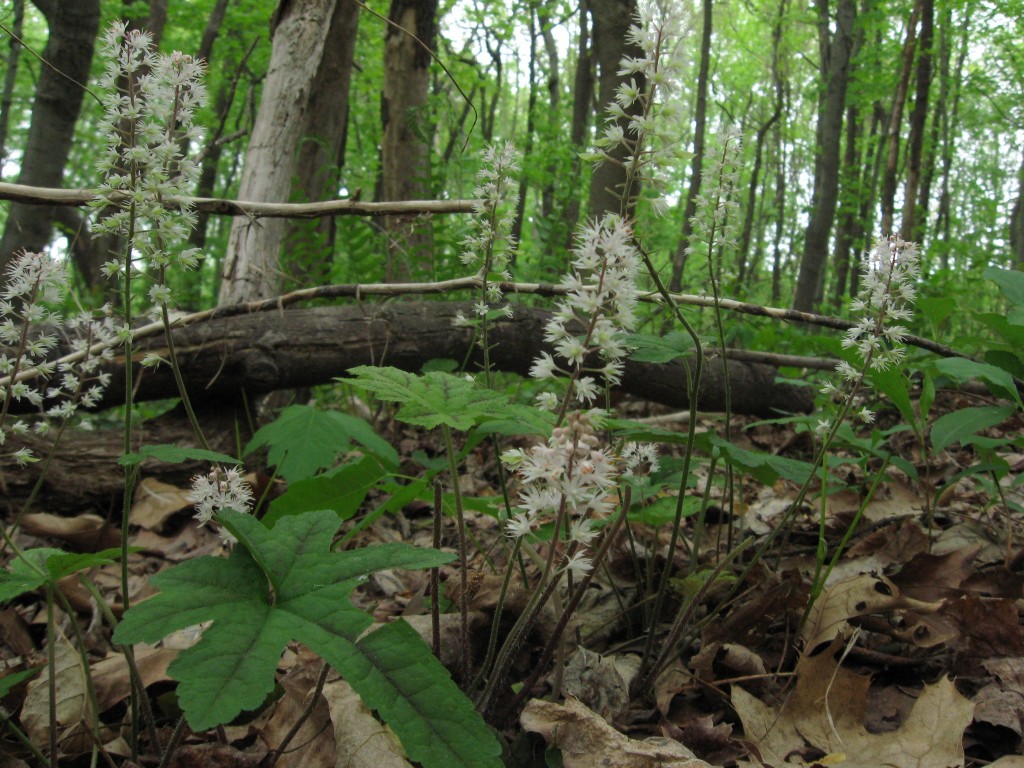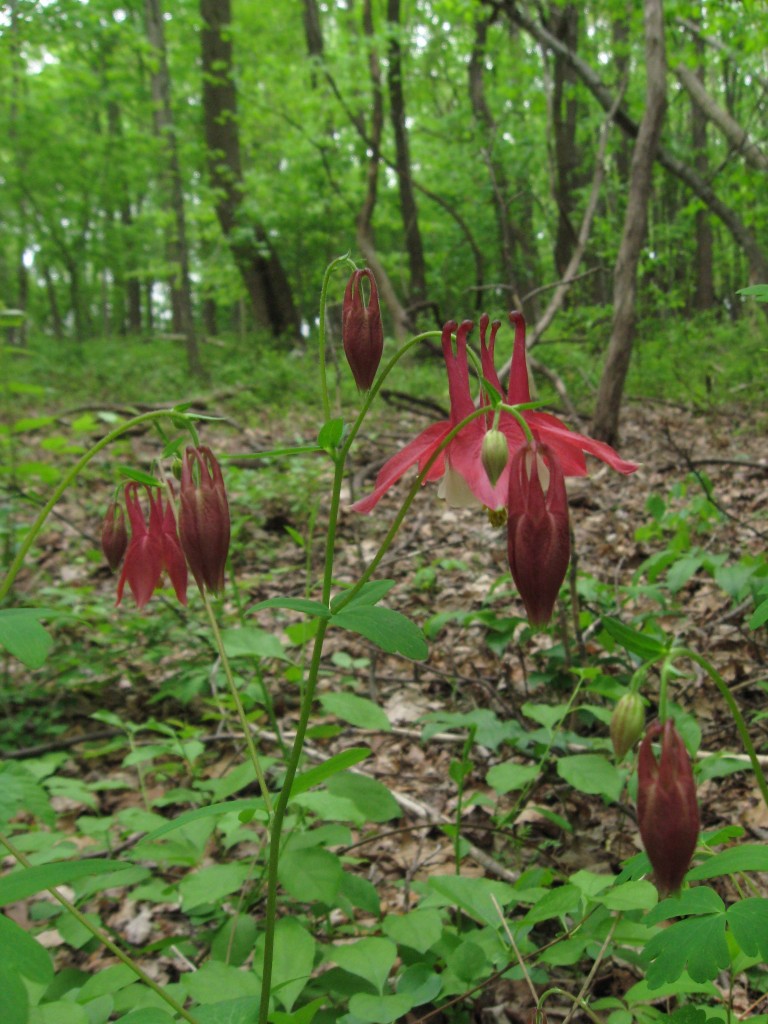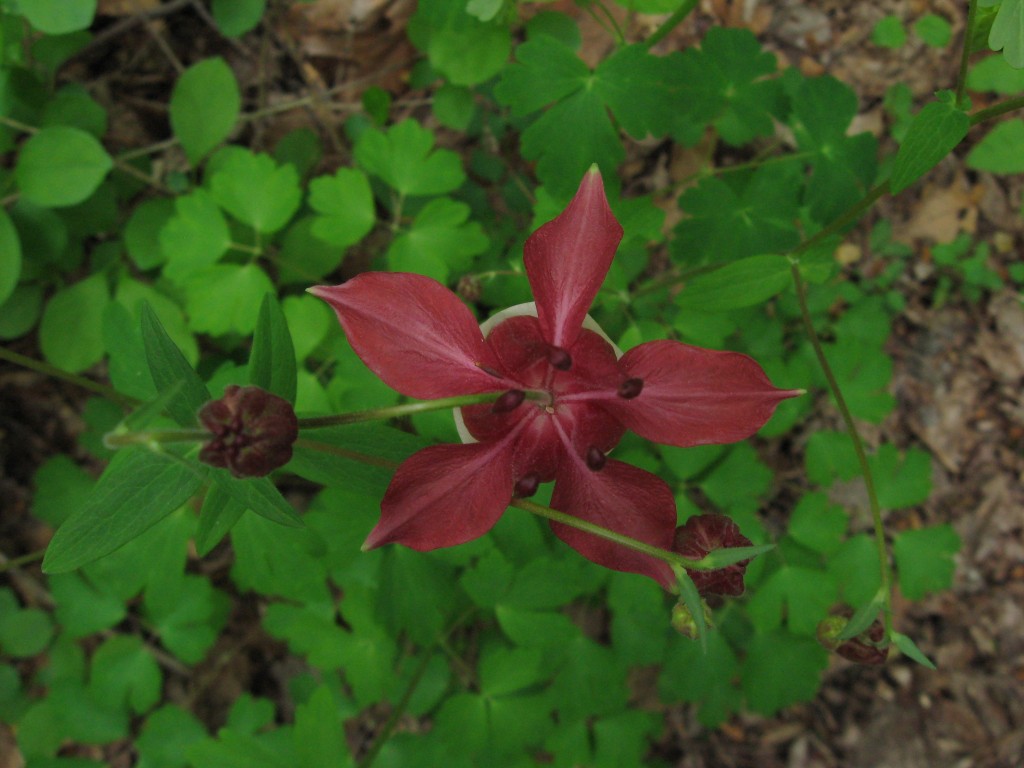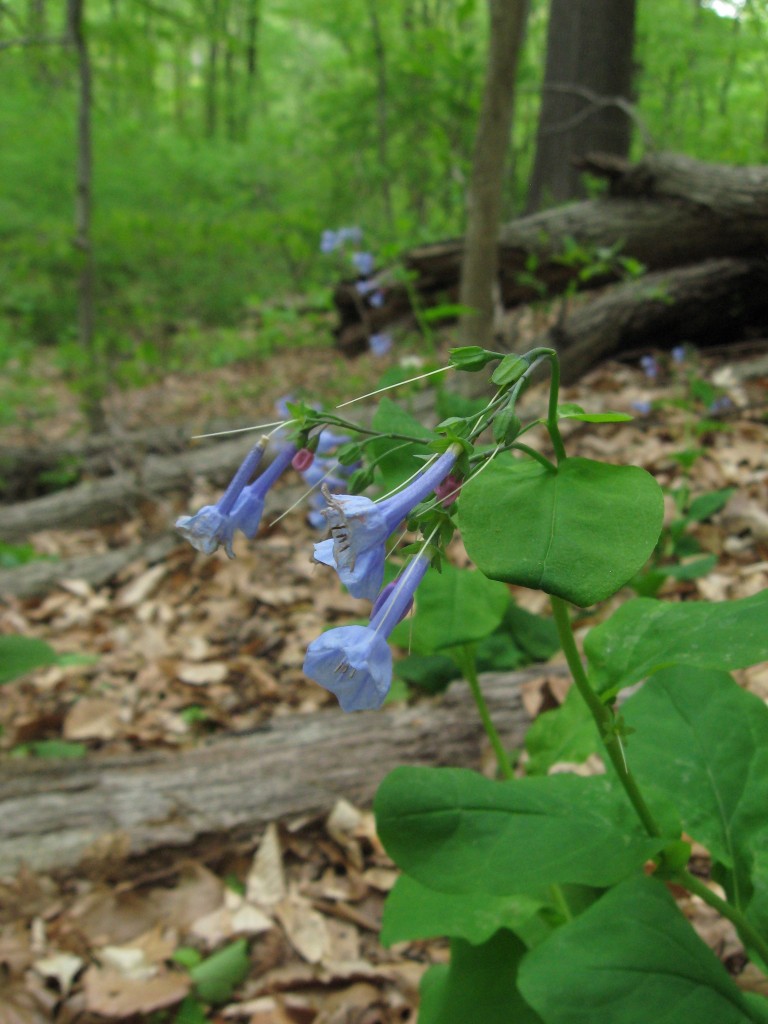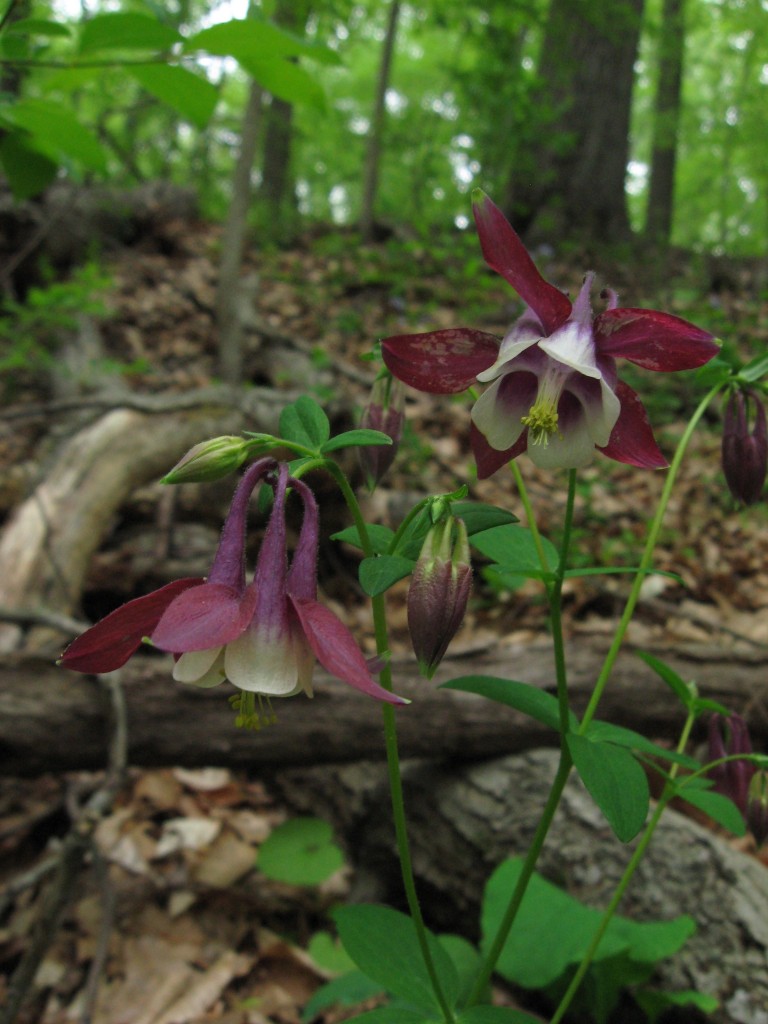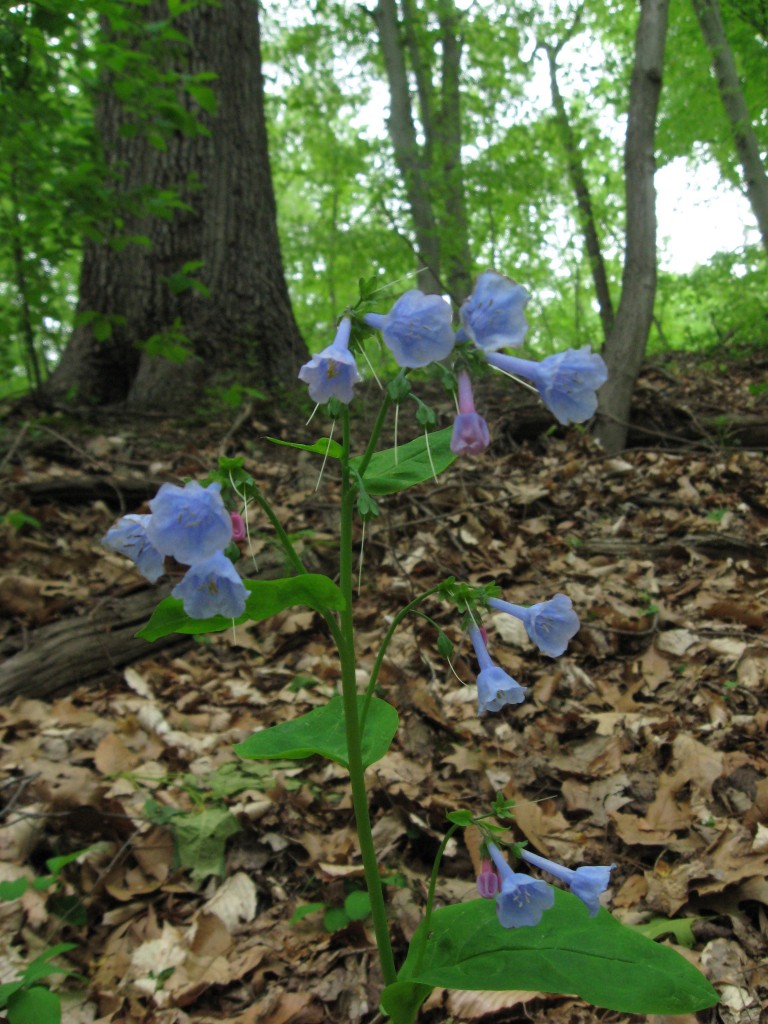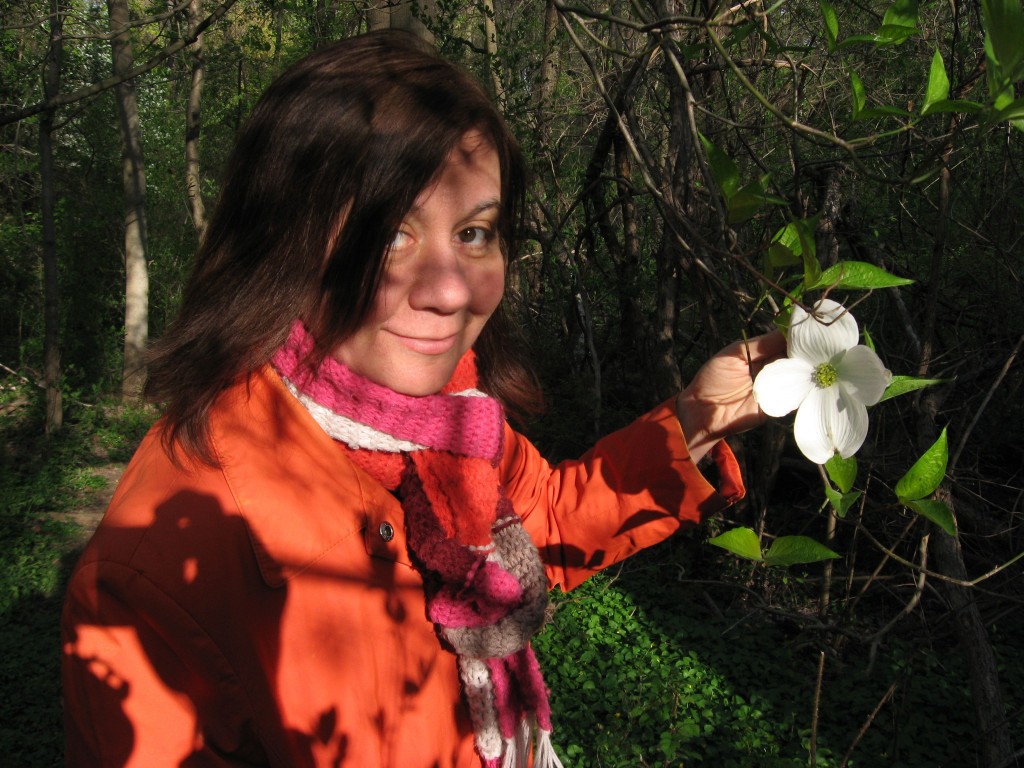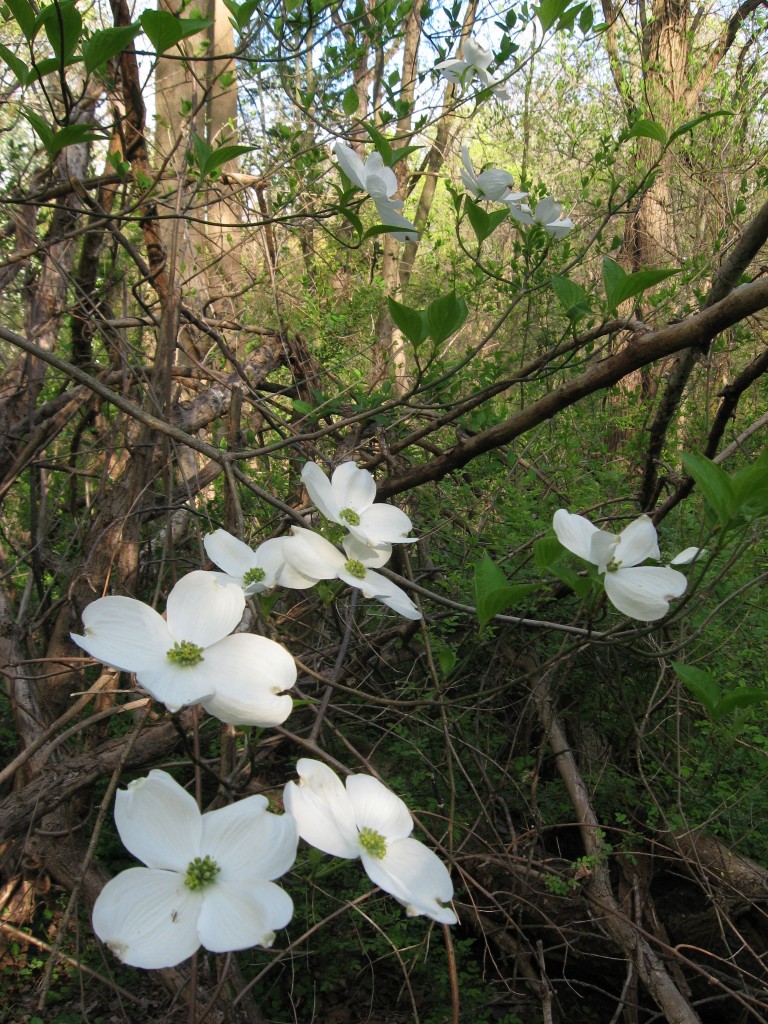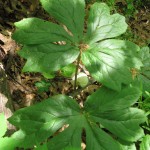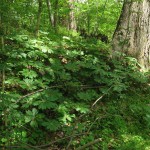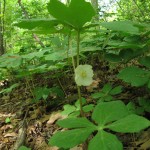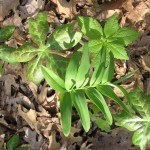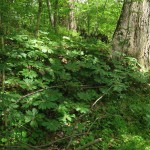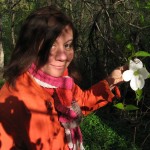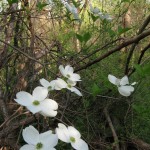This past August, 2012, another dying Ash tree crashed to the ground, taking down with it a young Hickory Tree. Â The Hickory tree was bent all the way down, but not cracked on its main trunk. On further inspection a lower branch was severed.
This is a part of the forest that is close to the edge of Morris Park, and there are many invasives in this area, which we regularly remove, such as the Japanese Angelica Tree (Aralia elata), the Tree of Heaven (Ailanthus altissima), Norway Maple, The Burning Bush, (Euonymus alatus), Japanese Privet, English Ivy, Japanese Pachysandra, Garlic Mustard (Alliaria petiolata) and the Vinca Vine.
We are trying to maintain the existing forest and to encourage the future forest in this challenging area full of garden escapes. Â There was some discussion about the best way to handle this immediate problem. How to get that dead ash tree off of the Hickory.
As far as the why bother is concerned, there is the #1 issue of the invasives taking every opportunity to dominate, and the #2 ongoing land management issue. In this degraded urban forest situation, it is us community members that care enough to become land managers, and do what we can to protect and preserve this small portion of  the 9000 acres of Fairmount Park.  In the area of scope that we concern ourselves with, every tree is given thoughtful consideration. As a sanctioned volunteer group, our permit does not allow us to use chainsaws, but we are allowed to use handtools.
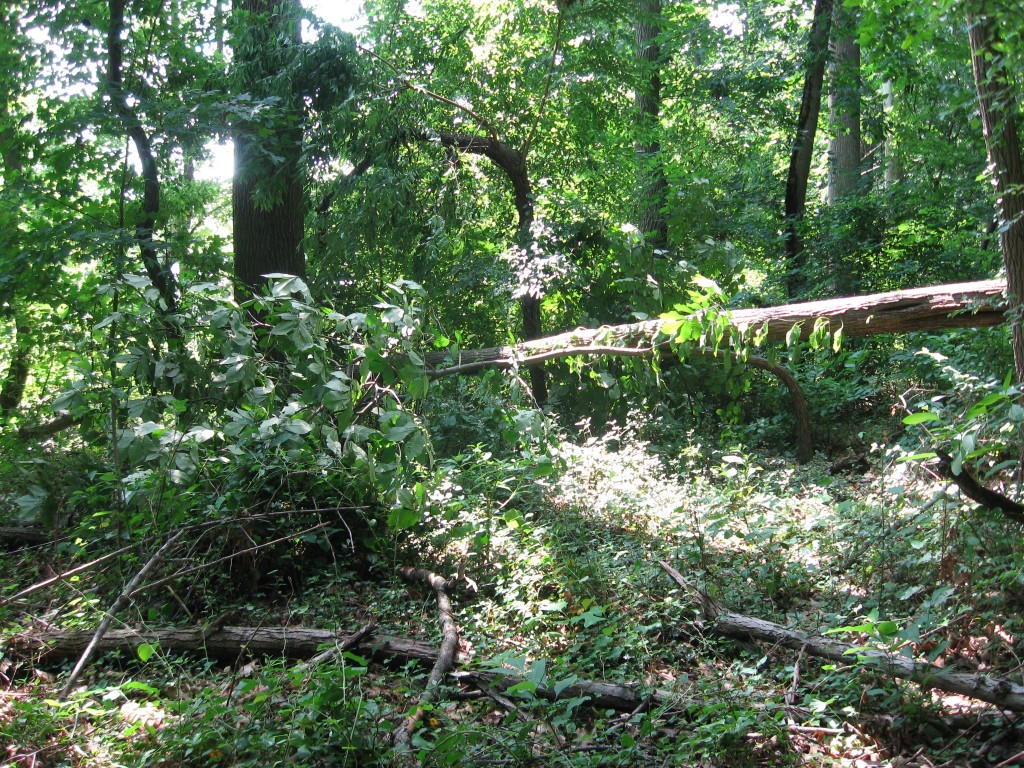
As pictured below, this hand-saw was able to cut through the fallen ash tree as if it were a stick of butter. It went so fast, there was barely time to stop long enough for a photo. Â No need for a chainsaw in this specific situation.
How could this be, no chainsaw, and the job done? Â It all started with the Flea market at the Eastern State Penitentiary in Fairmount, Spring 2005. This Philadelphia-Made Disston saw was purchased for the asking price of $20.00.
It was an old looking 19th century rusty old thing. Â It is a two person saw, and if you look at the end in the picture below, you will see a handle rising above the very end of it. This saw sat for some time in the basement of our Parkside office until it was time for it to rise to the call of duty.
The saw needed some basic restoration before it could become the amazing steel slicing mechanism and the natural extension of our appendices it has become: A fine file was purchased, as well as some 100 Â and 150 grit sandpaper and a tin of 5 and 1 oil. Â First, the blade was sanded down, to remove the small amounts of rust that have accumulated on this fairly well- preserved saw. Then after this five minute exercise was completed, the filing of the blades commenced.
The one inched long teeth, numbering to into the 70s, required a light filing, each and every one. Just like how we engage  and manage each and every  tree in our current area of scope in Morris Park, every tooth of this saw was sharpened in an exercise that took about one hour. Than the saw was oiled with the Five and One. The restoration took all said and done, about one hour and fifteen minutes. The gleaming, super-sharp hand-saw was ready for the job.
Most inspiring is a photograph that shows workers at a Disston Saw plant in Philadelphia hand- sharpening each tooth of a really large 7 or 8 foot in diameter blade. So thats how its done.  Hate to think of what trees these old blades cut  through though.
The Disston  hand-saw is no longer made. These products are easily found (for now), and easily rehabilitated.
The Ash tree was cut, and the Hickory Tree, liberated from the weight, Â rebounded into the air on this fine Monday, December 17, 2012.
Watch it go up!
So the time has come where we Humans are in charge of the great forests. We need to manage them, controlling invasives and encouraging native trees and now we even find ourselves controlling native species that have gone out of their natural controls, due to human-induced habitat and species loss.
